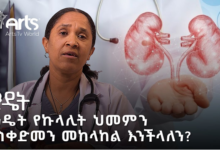superficial and deep vein thrombosis
Superficial vein thrombosis (SVT) and deep vein thrombosis (DVT) are both conditions involving blood clots, but they affect different types of veins in the body and have varying degrees of severity and potential complications.
- Superficial Vein Thrombosis (SVT):
- SVT occurs when a blood clot forms in a superficial vein, which is closer to the surface of the skin.
- It typically affects veins just beneath the skin’s surface, often in the legs, arms, or neck.
- SVT usually causes symptoms such as redness, warmth, swelling, and tenderness along the affected vein.
- While SVT can be uncomfortable and may lead to complications like phlebitis (inflammation of the vein), it is generally less serious than deep vein thrombosis.
- Treatment for SVT typically involves measures to relieve symptoms, such as applying warm compresses and taking anti-inflammatory medications. In some cases, doctors may prescribe blood-thinning medications to prevent the clot from growing or traveling to deeper veins.
- Deep Vein Thrombosis (DVT):
- DVT occurs when a blood clot forms in a deep vein, usually in the lower leg or thigh but can also occur in other parts of the body.
- DVT is more serious than SVT because deep vein clots have a higher risk of breaking loose and traveling through the bloodstream to vital organs, such as the lungs, causing a potentially life-threatening condition known as pulmonary embolism.
- Symptoms of DVT may include swelling, pain, warmth, and redness in the affected limb. However, some people with DVT may not experience any symptoms.
- Treatment for DVT typically involves blood-thinning medications to prevent the clot from growing larger and reduce the risk of complications like pulmonary embolism. In some cases, more invasive treatments such as thrombolytic therapy or placement of a vena cava filter may be necessary to dissolve the clot or prevent it from traveling.
In summary, while both superficial vein thrombosis and deep vein thrombosis involve the formation of blood clots within veins, they differ in terms of the location of the affected veins, severity of symptoms, and potential complications. Superficial vein thrombosis is generally less serious and often resolves on its own with conservative treatment, whereas deep vein thrombosis requires prompt medical attention to prevent potentially life-threatening complications like pulmonary embolism.











